“Excellence is an art won by training and habitation. We do not act rightly because we have virtue or excellence, but rather we have those because we have acted rightly. We are what we repeatedly do. Excellence, then, is not an act but a habit.”
Aristotle (384 BC – 322 BC)
Our main research goal is to develop catalysts that are made of Earth-abundant elements for chemical transformations that are related to synthesis, energy, and sustainability. Towards this goal, we currently focus on base metal catalyzed C-C bond forming reactions, C-H bond functionalization, (electro)catalytic water splitting, activation of small molecules such as CO2, H2, O2, as well as the development of synthetic models for the active site of metalloenzymes. Check out our publications for the latest research results.
Our research is highly interdisciplinary. Each individual project often involves three or more of the following areas: organic synthesis, synthetic methodology development, homogeneous catalysis, coordination chemistry, bio-inorganic chemistry, reaction mechanism, spectroscopy, surface chemistry, and electrochemistry. Current research topics include (i) fine chemical synthesis by base metal catalysts; (ii) bio-inspired H2 activation; and (iii) electrocatalytic H2 production and CO2 reduction.
Students and postdocs engage heavily in organic, inorganic, and organometallic syntheses, exploit a multitude of spectroscopic tools such as multinuclear NMR, IR, UV-Vis, electron microscopy, X-ray absorption spectroscopy and crystallography, and become proficient in the theory and application of electrochemistry.
Project I: Well-Defined Base Metal Catalysts for Organic Synthesis
We have developed well-defined Ni-based coordination complexes which prove to be outstanding catalysts for a wide spectrum of challenging reactions including cross coupling of non-activated alkyl halides and direct C—H functionalization. The chemistry can be used to prepare a large number of bio-active molecules, synthetic intermediates, ligands, pharmaceuticals, and organic materials in a straightforward, atom-economic, and timely manner.
A unique feature of this work is that we design and develop well-defined catalysts rather than to screen mixtures of metal salts and ligands. This approach allows us to understand and control the reactivity in a rational manner. It also allows us to thoroughly investigate the mechanism of the catalysis.
Key reference: Angew. Chem. Int. Ed. 2009, 48, 2937-2940; J. Am. Chem. Soc. 2009, 131, 9756-9766; J. Am. Chem. Soc. 2009, 131, 12078-12079; Angew. Chem. Int. Ed. 2010, 49, 3061-3064. J. Am. Chem. Soc. 2011, 133, 7084-7095.
Download a summary of this work (before 2010) in Chimia.
Examples for Ni-catalysis:
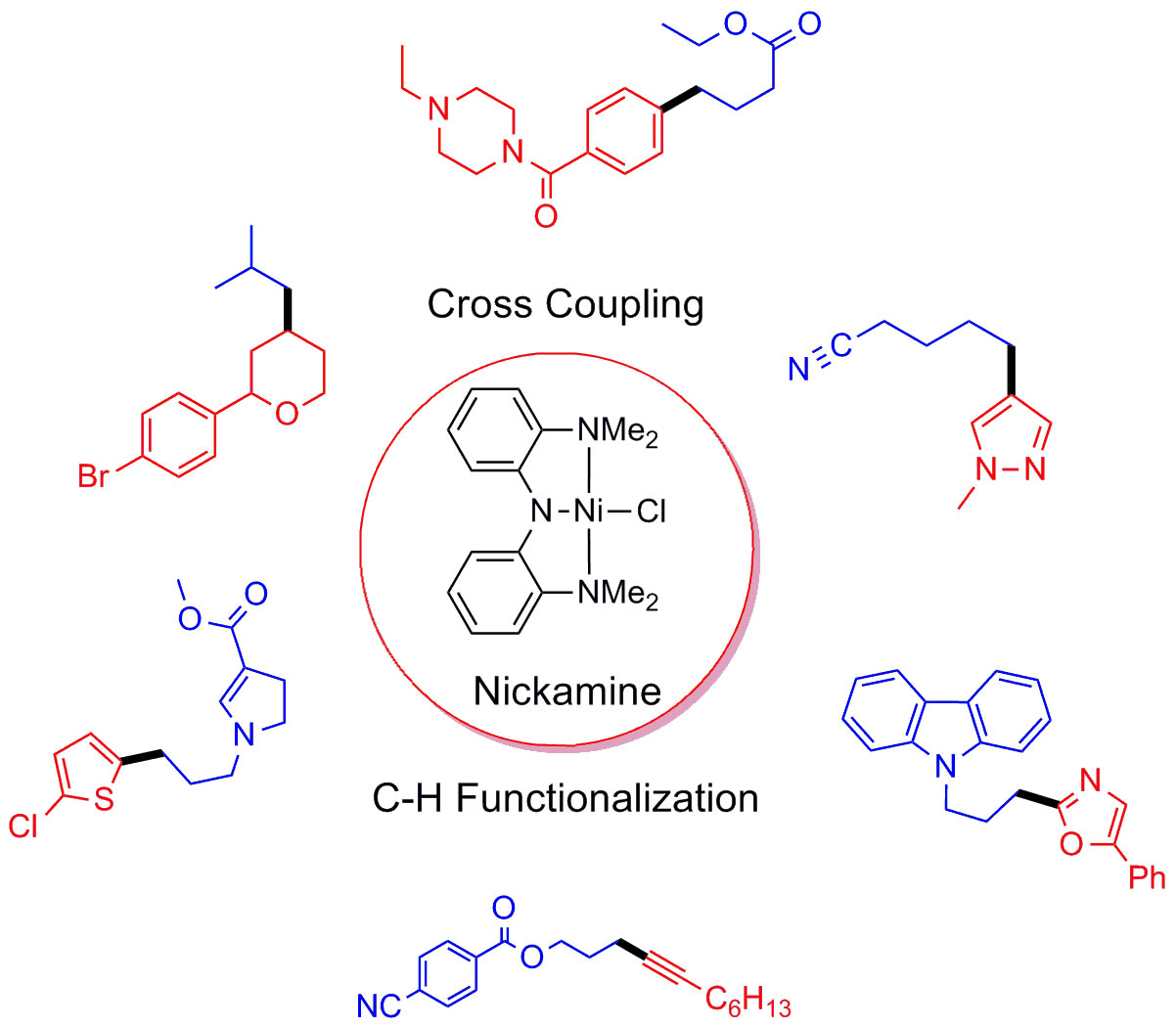
Project II: Bio-Inspired and Bio-Mimetic Small Molecule Activation
[Fe]-hydrogenase is a newly discovered hydrogenase that requires one single metal (Fe) for function. In light of the central role of H2 in technologies (fuel cell) and industries (hydrogenation), studies on the structure and function of [Fe]-hydrogenases are of significant current interest. Our group has developed two generations of synthetic models for the active site of [Fe]-hydrogenase, and has used them as structural and spectroscopic probes. Just recently, we have successfully synthesized a model complex that mimics faithfully the unusual pyridinyl methyl acyl moiety of the active site. The chemistry of this model complex provides an important chemical precedent for the enzymatic studies.
Key reference: J. Am. Chem. Soc. 2010, 132, 928-929; Angew. Chem. Int. Ed. 2010, 41, 7512-7515. Angew. Chem. Int. Ed. 2011, 50, 5671-5673.
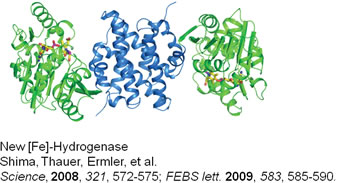
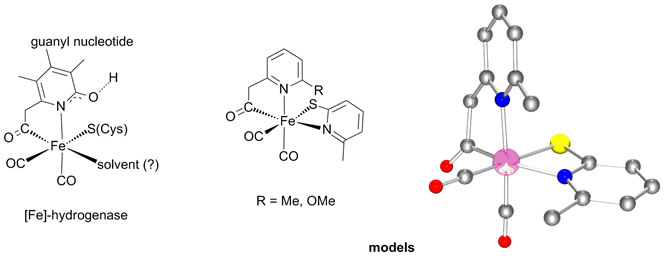
Project III: Catalysts for Hydrogen Evolution
Hydrogen is proposed as a major energy carrier for the future world. The cleanest and most sustainable method of hydrogen production is sunlight-driven water splitting (see scheme below). The hydrogen evolution, that is, the reduction of protons to form hydrogen, is an essential half reaction of water splitting. This reaction requires catalysts. Pt and its composites are the most active catalysts under the conditions envisioned for photochemical water splitting. However, the large scale application of Pt catalysts is limited by their high cost and low abundance.

Powering the Planet Center for Chemical Innovation (CCI solar).
Our lab has developed amorphous molybdenum sulfide catalysts that are efficient hydrogen evolution catalysts. These catalysts are compatible with acidic, neutral, or basic conditions in water. They are prepared in a simple, solution-processed, and scalable process. They are highly stable and rank among the most active non-precious catalysts.
Our first publication in this area has been released (Chemical Science 2011, 2, 1262-1267.)
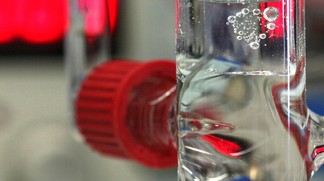
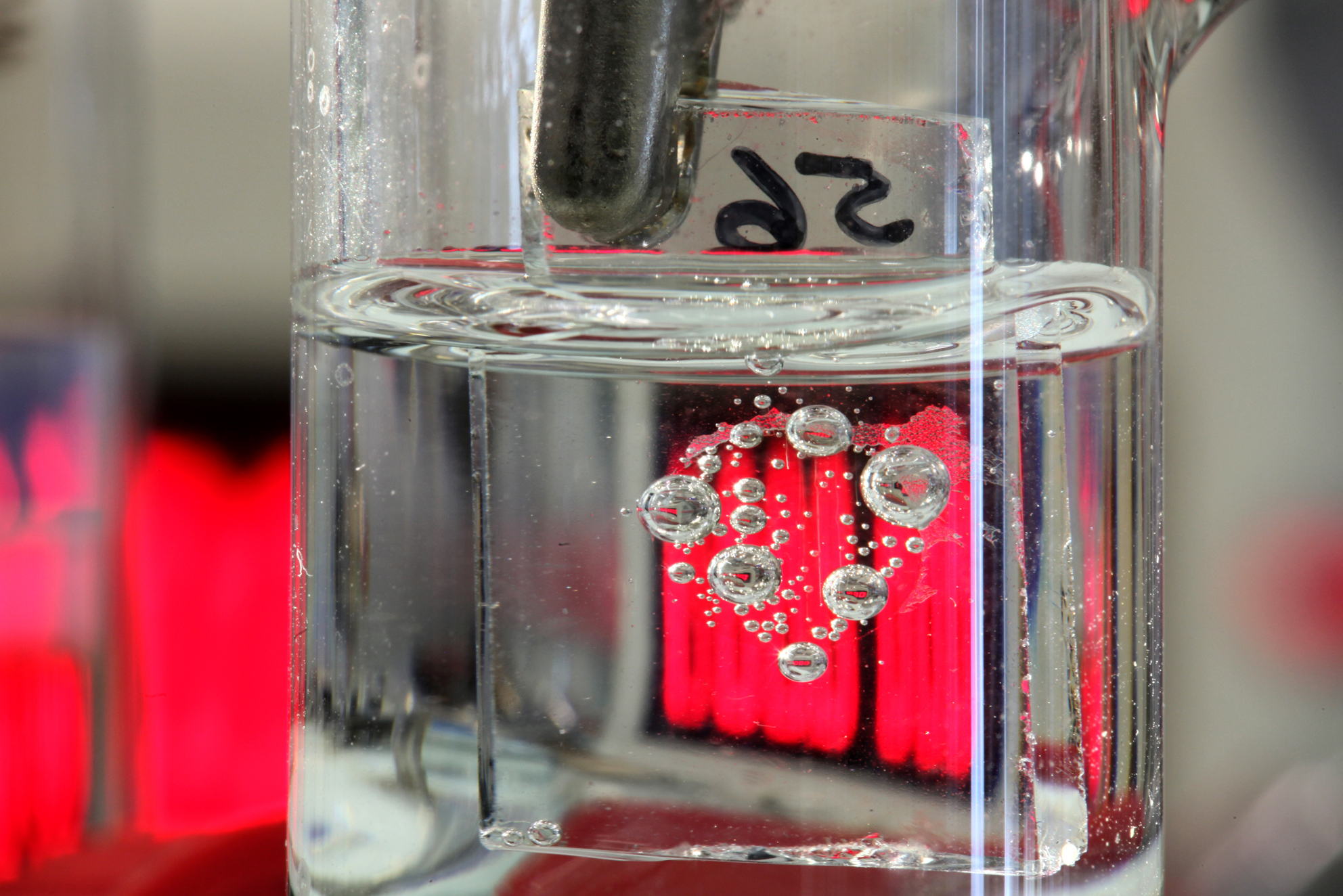
Image (c) Alain Herzog